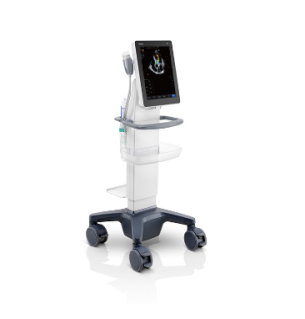Location: John Radcliffe Hospital, Oxford University Hospitals NHS Foundation Trust
Patients at Oxford University Hospitals NHS Foundation Trust are now diagnosed with greater confidence and speed with Mindray’s TE7 ACE point of care ultrasound system.
In 2019 Oxford University Hospitals NHS Foundation Trust (OUH) began a project to expand the ultrasound capabilities of the Emergency Department, led by emergency medical consultant Dr Priyadarshini Marathe, aiming to improve the speed, accuracy and volume of diagnosis and referrals. Having highlighted point of care ultrasound (POCUS) as a key driver for success, the Trust began to search for devices that were cost-effective and flexible enough to perform across multiple departments, with the Adult Ambulatory Unit and Adult Intensive Care Units also joining the project. After a five-week trial period, the Trust initially purchased seven Mindray TE7 ultrasound systems to boost its POCUS capabilities in both the Churchill and John Radcliffe Hospitals.
Challenges
- Maintaining Oxford’s status as an innovative teaching centre required devices that demonstrated the Trust’s forward thinking approach
- Replacing the old devices with systems that could be used quickly and safely in many different clinical environments
- Increasing ultrasound capabilities with scalable technology to meet the needs of each department now and in the future
COVID-19 response
Devices that are manoeuvrable and easy to sterilise have gained new recognition during the coronavirus pandemic, with users able to follow pandemic protocols and still deliver consistent care in different clinical environments. As a result, the TE7’s nimble trolley design and wipe-down touchscreen were highlighted by the Trust as important factors in the continued delivery of POCUS during the pandemic. Validated with all leading UK cleaning agents, the TE7 allowed clinicians to safely move around their departments during the pandemic, delivering POCUS rapidly and effectively under stringent sterilisation guidelines.
The solution
- Industry leading flexibility: Users can connect up to three probes at once, speeding up diagnosis times by reducing the need to frequently change probes.
- Versatile shape: Slim profile for greater manoeuvrability in different clinical environments, as well as adjustable height, screen tilt and secure probe holders for maximum utility.
- Intelligent and intuitive: From artificially intelligent support on fluid diagnostics and lung examinations, to everyday sonography, the TE7 offers a broad range of diagnostic tools for use in multiple clinical scenarios.
- Easy infection control: Usable with gloves or gel, the sleek touchscreen design has no crevices or collection points for fluids and is validated with all leading UK cleaning agents.
Outcomes
- Faster diagnosis and referrals procedure: Staff believe the usability of the device has improved the rate and accuracy of diagnosis.
- Improved teaching capacity: At any given time, there are 20 doctors training on the new ultrasound machines, helping the hospital and university maintain their places at the forefront of medical education.
- Working during COVID-19: Mindray’s ability to supply more easy-to-clean, compact devices without sacrificing on quality allowed the Trust to increase its POCUS capacity mid-pandemic.
- Future proofed software and connectivity: With built-in AI support and electronic patient record integration, the Trust can scale up its devices to meet future demands.
Conclusion
Thanks to the TE7, patients at Oxford University Hospitals are now diagnosed and referred with greater confidence and speed, saving vital time in the patient journey. By increasing ultrasound capabilities beyond initial expectations with devices suited to their pandemic protocols, clinicians were also able to deliver POCUS more effectively during the peak of COVID-19.
Providing a range of comprehensive features for now and in future, the TE7 devices have also helped clinicians in the emergency department continue their role as global leaders in innovation and education.




